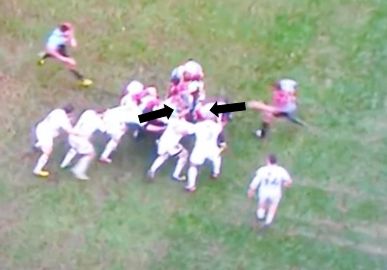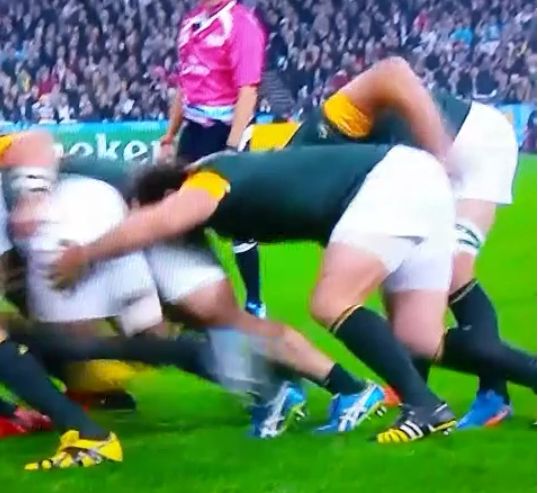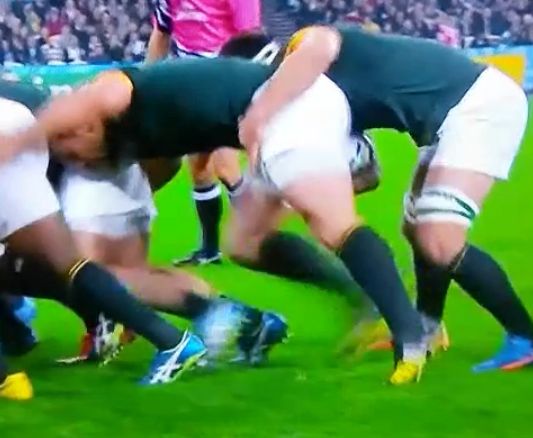It doesn’t seem that long ago that World Rugby (or the IRB as it was then) considered changing rugby’s laws to allow the defending team at the maul to bring it down. The reason the variation was considered was that rugby at the top level was becoming a procession of mauls and little else. Ultimately the idea was not adopted but we are now back at the point where the attacking maul is dominating the game.
We don’t have any statistics on how many tries are scored directly or immediately following an attacking maul but the figure could conceivably be north of 30%. In teams which are well coached, the 5m lineout choice is arguably a much better option than a penalty kick for 3 points, given the high chance of success.
Why are we back in this position?
Simply put, referees are not applying the laws as they are written.
At the top level this isn’t the fault of the referees because they follow the directions set out by World Rugby and they have black marks against them if they don’t follow the directions from above.
Several months ago we highlighted several laws that referees needed to apply and this is also true of the maul laws. There is nothing wrong with the laws as they are written, they just need to be applied.
World Rugby has started to move to head off some of the more blatant infringements in the maul through a grandly titled Law Application Guideline. We will look at this in a bit more detail later, but firstly here are the 3 main reasons that most mauls are illegal (there are lots more, but let’s stick to the most material ones!).
(1) Blocking the defenders from tackling the receiver
Once the receiver in the lineout hits the floor the defenders are allowed to tackle him (before the maul forms). What we often see now is the two lifters for the team with the lineout move across in front of the receiver and bind to him as he hits the ground.
This has the benefit of establishing a solid base for the ensuing maul immediately but it prevents the defending team from getting to the receiver as he hits the ground. This blocking is illegal but is rarely picked up by referees.
This Vine from a recent Harlequins-Cardiff Blues game:
If we look at a still taken at the moment Robshaw (the receiver) hits the ground we can look in a bit more detail at the positions of the Harlequins players.

The view from the high camera isn’t too clear but we can see the two Harlequins lifters (shown with the arrows) have angled their bodies across in front of Robshaw which is preventing the Cardiff defenders from attacking him. The Vine actually shows that they shift their body positions in front of the ball before Robshaw has even returned to the ground.
(2) The ball carrier in the maul slides to the back of the maul
The skill in the rolling or driving maul used to come from being able to transfer the ball by hand from the front of the ball to the back. Given this is a risky operation what better way to get the ball to the back of the ball than to slide back? This is now the chosen option at the top level.
This Vine from a World Cup game involving South Africa clearly illustrates what we mean by the ball carrier “slide” in the maul.
This seems to be a piece of magic because a South African (number 2) joins the maul and yet the ball carrier moments later appears behind him with the ball in hand! Pretty clever stuff but illegal.
It is stating the obvious, but to be a part of the maul a player needs to be bound to another player in the maul. The law (17.2.c) even goes on to say that:
“Placing a hand on another player in the maul does not constitute binding”.
The ball carrier has the ball in his right hand, so to get from his original position to slot in behind the hooker he breaks his bind with his left hand and re-binds behind him.
Here is a screen shot which clearly shows the hand not bound as it comes around the hooker.

The hand then re-binds on the hip and as if by magic the carrier has shifted backwards in the maul keeping himself away from the defenders and allowing the attacking team to add another man to the maul.

(3) Players joining the maul in front of the back foot
This is probably the most widely abused and ignored law of them all at the maul. Someone watching a game of rugby for the first time would be amazed to learn that there is a law which says that a player from the attacking team at the maul is only allowed to join the maul at the back foot.
This is the precise wording from law (17.4.c):
“Players joining the maul. Players joining a maul must do so from behind the foot of the hindmost team-mate in the maul. The player may join alongside this player.”
The wording is unambiguous so why at virtually every maul does the referee allow players to join the maul metres in front of the hindmost foot? If anyone knows the answer please write in!
If you want to see any example of this approach watch any maul in a professional game. Here is a great example though from the Toulouse – Saracens Champions Cup game.
The Saracens’ pack is so well drilled a gap is made for the hooker to join the maul which is a whole player’s worth of body in front of the hindmost foot. This isn’t a subtle slight of hand to con a referee, it’s a blatant infringement knowing they won’t be penalised for it.
The Saracen’s example only has one player join in front of the hindmost foot but you will often see examples of 2 or even 3 players joining the maul well in front of the hindmost foot.
Why doesn’t World Rugby do anything about it?
The way the maul is currently refereed it is no wonder that the contest isn’t fair and the defending team have a hard job to legally defend the maul. Too many tries are scored from the fact existing laws aren’t being applied by World Rugby. Can there be another game where laws are ignored so by officials?
As mentioned earlier, World Rugby seems to have cottoned on to the fact that the maul is no longer a fair contest so the Law Application Guidelines around the maul have been put together.
The guidelines try to outlaw some of the practises we have covered in this article but bizarrely they say that the guidelines will be applied from June 1st 2016 in the northern hemisphere. This raises two questions:
- How have we got to the point where we need guidelines to be written to remind players and coaches of the laws around the maul? At what point were they not applied as per the book?
- Why do we need the guidelines given the law is very clear in this area – it just needs referees to apply what is written
A well constructed and implemented maul can be a thing of beauty but the current law application is too generous to the attacking team. This has resulted in an unfair contest with the defending team having few legal options to stop a well formed maul.
Any changes that bring back the contest at the maul will be a good thing for the game.
Follow theblitzdefence on Facebook here.